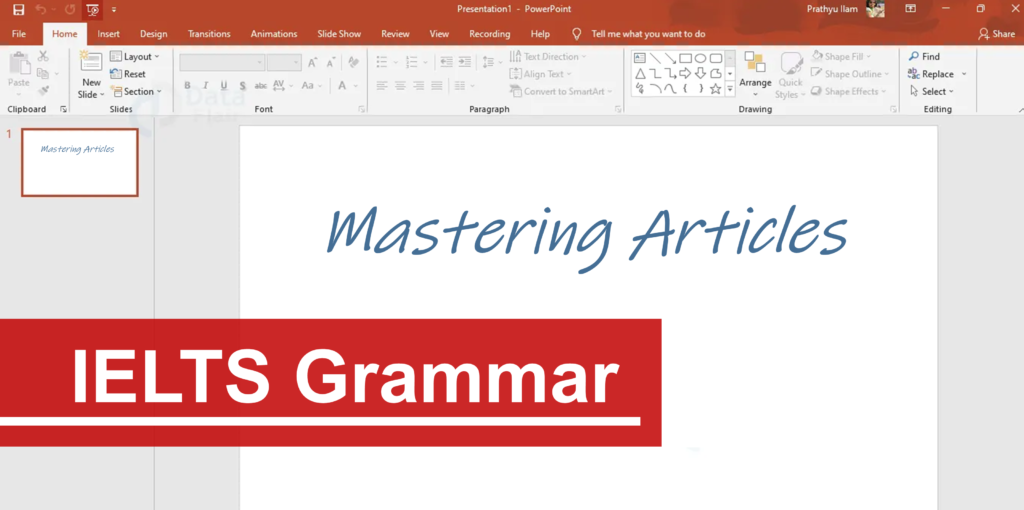Mastering Articles: ‘A,’ ‘An,’ and ‘The’ for IELTS Students

For IELTS students, navigating the intricacies of English grammar, such as the proper usage of articles – ‘a,’ ‘an,’ and ‘the,’ can be a real challenge. These seemingly insignificant words wield immense power, as they can significantly affect the clarity and precision of your communication in both the speaking and writing sections of the IELTS exam. In this article, we will delve into the rules for using these articles with greater detail, offer numerous examples, and provide guidance on how to apply them effectively.
Understanding the Basics
1. ‘A’ and ‘An’ – Indefinite Articles:
- ‘A’ is employed before singular countable nouns that initiate with a consonant sound. For example, “I saw a car on the street.”
- ‘An’ is utilized before singular countable nouns that commence with a vowel sound. For instance, “She ate an apple for breakfast.”
2. ‘The’ – Definite Article:
- ‘The’ is placed before singular or plural countable nouns and uncountable nouns, signifying specificity, previous mentions, or shared knowledge. For example, “I need to get the book you mentioned.”
Rules for Using ‘A’ and ‘An’
- Singular Nouns: ‘A’ or ‘An’ must be used with singular countable nouns. For example, “She is a teacher.”
- Consonant or Vowel Sound: The choice between ‘a’ and ‘an’ is determined by the sound of the noun, not its spelling. For instance, “It’s an hour” because ‘hour’ is pronounced as if it starts with a vowel sound.
- Unspecific and First Mention: ‘A’ or ‘An’ should be employed when the noun is mentioned for the first time and lacks specificity. For example, “I bought a new phone.”
- Use ‘A’ Before Words Starting with Consonant Sounds: Words commencing with consonant sounds necessitate ‘a.’ For example, “He lives in a university town.”
- Use ‘An’ Before Words Starting with Vowel Sounds: Words initiating with vowel sounds necessitate ‘an.’ For example, “She is an excellent swimmer.”
Rules for Using ‘The’
- Specificity: ‘The’ is used when you are referring to a specific item, something that has been mentioned earlier, or is widely known. For example, “I saw a dog, and then I saw the same dog again.”
- Unique Nouns: ‘The’ is employed with unique nouns or nouns that are one-of-a-kind. For instance, “The sun is shining.”
- General vs. Specific: Use ‘the’ when discussing a specific item within a broader category. “I want to buy the book on the top shelf.”
Applying Articles in the IELTS Exam
Speaking Section:
Example 1 – Question: “Do you like the music of your country?”
Response: “Yes, I enjoy the music of my country, especially the traditional songs. The music often reflects our cultural heritage.”
Writing Section:
Example (Essay Prompt): “Discuss the importance of protecting the environment.”
Response: “Protecting the environment is crucial for our planet’s survival. We must take action to reduce pollution and conserve natural resources. Moreover, the environment impacts our health and well-being.”
In both examples, ‘the’ is strategically placed to provide specificity, emphasizing the importance of the subject, and enhancing the clarity of the responses.
Conclusion
Mastering the proper usage of articles ‘a,’ ‘an,’ and ‘the’ is fundamental for IELTS students. These seemingly inconspicuous words wield immense power in English, impacting the precision and clarity of communication. Whether in the speaking or writing sections of the IELTS exam, the correct use of articles is essential. Diligent practice in diverse contexts will ensure that you can confidently showcase your language proficiency and attain a high score in the IELTS exam.





